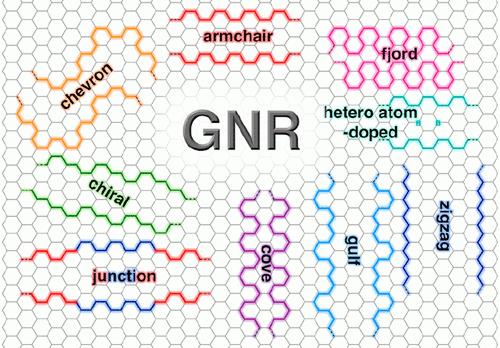


Yuuta Yano, Nobuhiko Mitoma, Hideto Ito,* Kenichiro Itami*
J. Org. Chem. 2020, 86, 4-33. DOI: 10.1021/acs.joc.9b02814
Perspective review in the special issue on “Functional Organic Materials”
Selected as a cover picture in vol.85 issue 1.
Abstract
Graphene nanoribbons are the class of next-generation carbon materials that are attracting many researchers in various research fields. Their unique properties, such as band gap, conductivity, carrier mobility, thermal conductivity, spin polarization, and on–off behavior, heavily depend on structural factors such as edge structure, width, and length. Therefore, the synthesis of graphene nanoribbons with control over these structural factors with atomic precision is crucially important. Among various synthetic approaches, bottom-up synthetic methods such as on-surface polymerizations and solution-phase polymerizations represent promising ways to control the width, length, and edge structure of graphene nanoribbons. In this Perspective, we introduce the recently reported bottom-up synthetic methods for graphene nanoribbons and the theoretical and experimental research on those physical properties and applications. Reviewing these researches along with highlighting advantages and limitations, we emphasize how structurally controlled synthesis is important and provides future outlooks in graphene nanoribbon science.